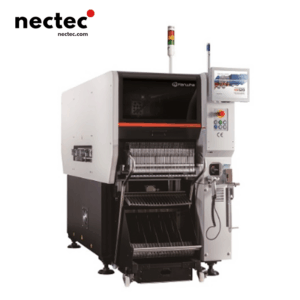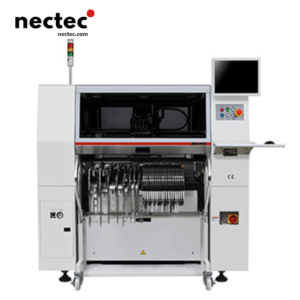In the ever-evolving landscape of electronics, connectors play a crucial role in ensuring optimal performance and reliability. Among the various options available, spring loaded PCB (Printed Circuit Board) pins stand out for their unique advantages. This article takes an in-depth look at spring loaded PCB pins, their applications, benefits, and best practices for their use in modern electronic designs.
What are Spring Loaded PCB Pins?
Spring loaded PCB pins, also known as pogo pins, are electrical connectors featuring a spring mechanism that allows them to maintain a consistent force against the contact surface. This design ensures a secure and stable electrical connection, even in dynamic conditions. The key components of a spring loaded pin include the housing, a spring, and the conductive pin itself.
Applications of Spring Loaded PCB Pins
Spring loaded PCB pins are versatile and can be found in various industries. Some of the most common applications include:
- Consumer Electronics: Many smartphones, tablets, and portable devices utilize spring loaded pins for charging and data transfer, enabling users to establish a connection effortlessly.
- Medical Devices: In medical technology, reliability is paramount. Spring loaded pins are frequently used in diagnostic equipment and wearable health monitors to ensure a dependable connection.
- Automotive Industry: As vehicles become increasingly advanced, spring loaded pins are used in systems like infotainment interfaces and safety features, providing a robust solution for challenging environments.
- Industrial Automation: In automation systems, these connectors facilitate communication between components, ensuring data is transmitted accurately and swiftly.
Benefits of Using Spring Loaded PCB Pins
The advantages offered by spring loaded PCB pins are numerous:
1. Enhanced Reliability
Due to their spring mechanism, these pins maintain constant pressure, which reduces the risk of intermittent connections, especially in environments where vibration or movement is common.
2. Compact Design
Spring loaded pins are designed to be compact, making them ideal for applications where space is limited. Their small footprint allows for flexible design layouts without compromising functionality.
3. Easy Integration
Integrating spring loaded pins into PCB designs is straightforward. They can be easily placed within existing layouts, providing an effective solution without requiring extensive redesign efforts.
4. Versatility
Spring loaded pins can work with various surfaces, including flat and curved forms. This adaptability makes them suitable for numerous applications across different sectors.
Challenges and Considerations
While the benefits of spring loaded PCB pins are compelling, there are several considerations to be aware of when employing them in your designs.
1. Wear and Tear
Over time, the repeated compression of the spring can lead to wear, potentially affecting performance. Therefore, it is crucial to select high-quality pins suited for the intended usage duration.
2. Cost Implications
While spring loaded pins provide reliable solutions, they can be more expensive than traditional non-spring options. Evaluating the cost versus benefits for each application is essential for budget-conscious projects.
3. Environmental Factors
Extreme temperatures or corrosive environments can adversely affect the performance of spring loaded contacts. Therefore, choosing the appropriate materials or coatings is vital to enhance durability.
Best Practices for Using Spring Loaded PCB Pins
To maximize the advantages of spring loaded pins, consider the following best practices:
1. Select the Right Pin for Your Application
The selection process should begin with a clear understanding of your specific needs. Factors such as current rating, pin height, and operating environment are essential considerations when choosing the right pin.
2. Conduct Thorough Testing
After integrating spring loaded pins into your PCB, conduct robust testing to ensure they meet the performance requirements of your application. This includes checking for secure connections under various environmental conditions.
3. Implement Prototyping
Before full-scale production, utilizing prototypes can help identify design flaws or issues with pin placement. This step can save time and costs in the long run.
4. Maintain Regular Inspections
In operational systems, regular inspection of spring loaded pins is crucial. Monitoring their condition can preemptively address issues stemming from wear or external factors.
Future Trends in Spring Loaded PCB Pins
The evolution of technology continuously influences the design and implementation of spring loaded pins. Here are some trends to watch:
1. Miniaturization
As electronic devices become smaller, the demand for miniaturized connectors is rising. Spring loaded PCB pins are evolving to accommodate these changes without sacrificing connection reliability.
2. Enhanced Materials
The continued use of innovative materials for spring loaded pins can dramatically improve their performance and durability. Manufacturers are investing in research to create pins better suited for harsh environments.
3. Smart Connectivity
With the rise of IoT, smart devices are increasingly integrating complex connectivity solutions where spring loaded pins will play a pivotal role.
Conclusion
Whether you’re designing a consumer electronic device, a medical solution, or an automotive application, understanding spring loaded PCB pins—along with their applications, benefits, and implementation best practices—can significantly impact the reliability and functionality of your product. As technology continues to evolve, these pins promise to remain a fundamental component in enhancing connection quality across various industries.











